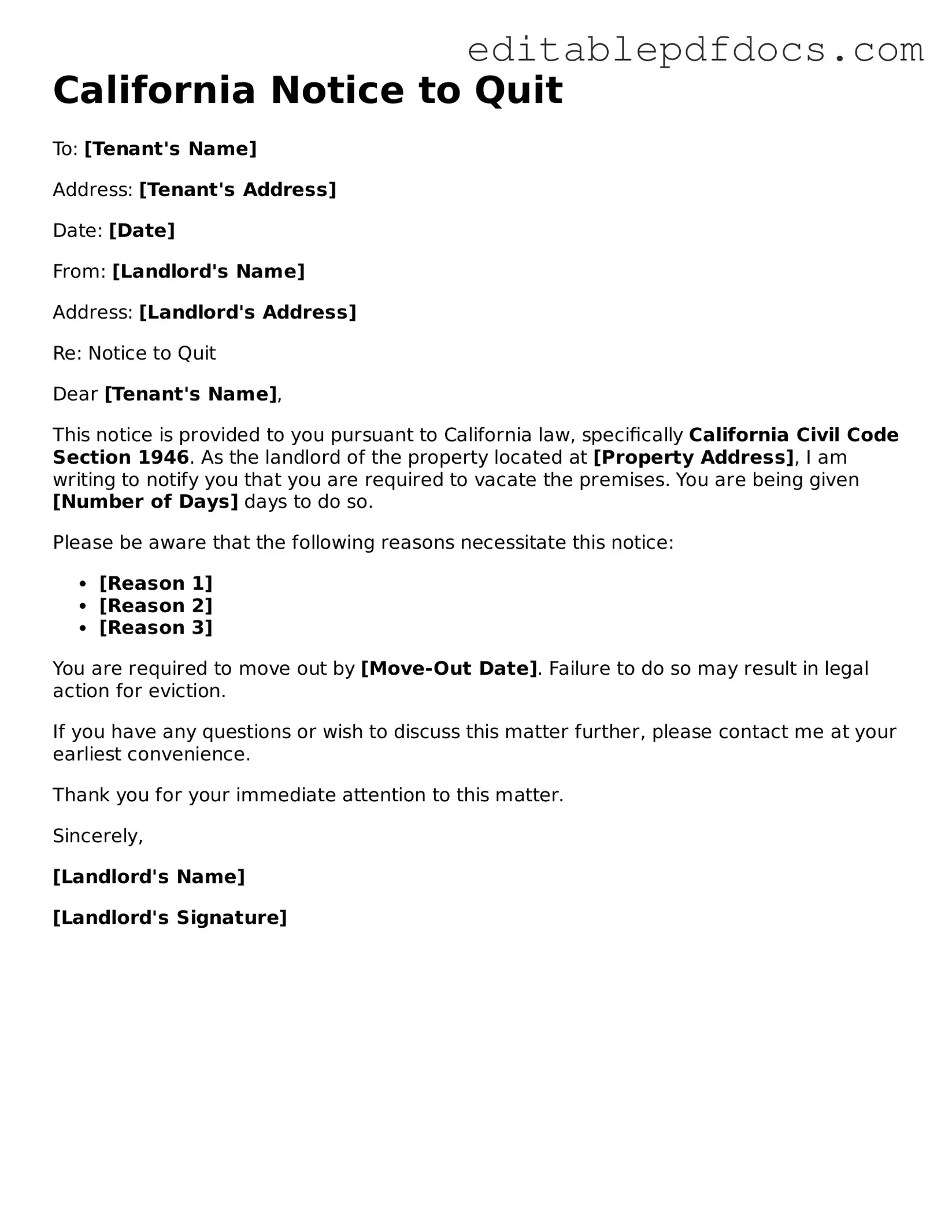When filling out the California Notice to Quit form, many people inadvertently make mistakes that can complicate the eviction process. Understanding these common errors can help ensure that the form is completed correctly and effectively. Here are six mistakes to watch out for.
One frequent error is not providing the correct tenant information. It is crucial to include the full name of the tenant as it appears on the lease agreement. Omitting or misspelling names can lead to confusion and may even render the notice invalid. Always double-check this information before submitting the form.
Another common mistake is failing to specify the reason for the eviction. California law requires that the Notice to Quit state the grounds for termination clearly. Whether it’s for non-payment of rent or a breach of lease terms, being vague can result in delays or challenges in the eviction process.
Many individuals also overlook the importance of providing the correct date for the notice. The law stipulates specific timelines for how much notice must be given, depending on the reason for the eviction. Failing to adhere to these timelines can lead to the notice being dismissed in court.
In addition, some people forget to sign and date the Notice to Quit. This step is essential, as an unsigned notice may be deemed invalid. It’s a simple yet critical detail that should not be overlooked.
Another mistake involves not delivering the notice properly. California law outlines specific methods for serving a Notice to Quit, including personal delivery or posting it on the property. Ignoring these methods can result in legal complications down the line.
Finally, individuals sometimes neglect to keep a copy of the Notice to Quit for their records. This can be a significant oversight, especially if the matter escalates to court. Having a copy serves as proof that the notice was issued and can help support your case if needed.
By being aware of these common mistakes, landlords and property owners can better navigate the eviction process in California. Taking the time to complete the Notice to Quit accurately can save time, reduce stress, and help ensure a smoother transition.
